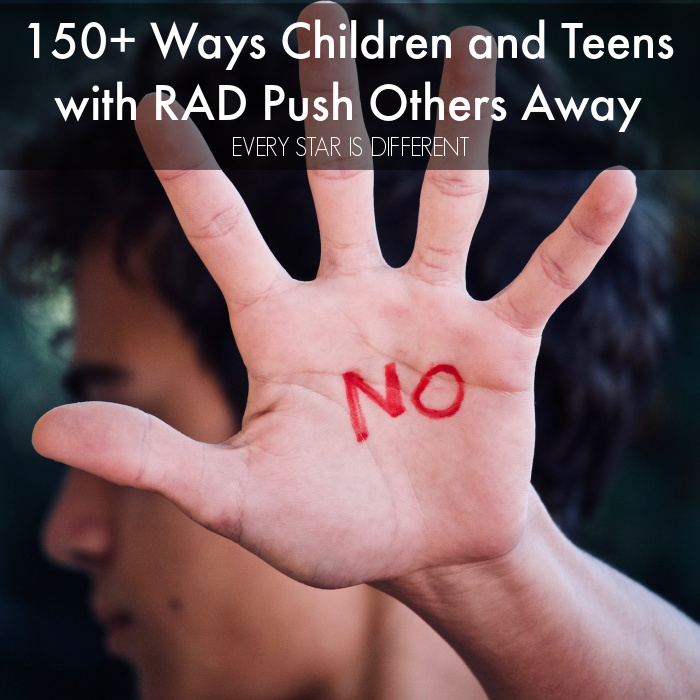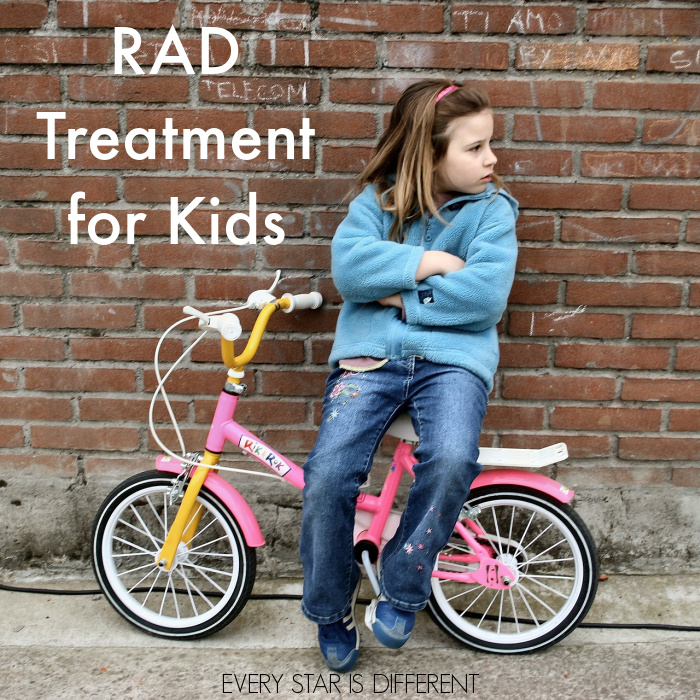Reactive Attachment Disorder (RAD) is such a rare diagnosis.
It's hard to understand who has it and who doesn't, based on when trauma occurred, when behaviors began, and how soon struggles were observed.
Due to the complications of receiving a diagnosis of RAD, some seek out famous cases of Reactive Attachment Disorder to compare.
Understanding famous cases can help caregivers of children with Reactive Attachment Disorder know what to expect, how to cope, and how to get help.
Many caregivers that are faced with the realities of Reactive Attachment Disorder wonder who else has gone through this experience.
What does the experience of others look like?
Is healing possible?
It's my goal to share famous cases of Reactive Attachment Disorder based on my own personal observations combined with knowledge of others that is available to the public, in hopes it may help caregivers.
Disclaimer: I am not a therapist. I am not a psychologist. I am not a developmental pediatrician. I cannot diagnose.
The list of people below are those whom I (and my family) believe could be famous cases of Reactive Attachment Disorder based on what they have experienced.
Many have not been identified as such. Others are assumed to have Reactive Attachment Disorder, but this information cannot be confirmed.
Some of these people are actually characters in movies, tv shows, and books.
I am sharing, so that caregivers and others seeking information about Reactive Attachment Disorder can start to see a pattern in behaviors and struggles.
Please remember that Reactive Attachment Disorder is a spectrum disorder, which means that every case varies in severity and struggle.
Famous Cases of Reactive Attachment Disorder
Before we dig into famous cases of Reactive Attachment Disorder, it's important to understand what Reactive Attachment Disorder is.
If you are unfamiliar with Reactive Attachment Disorder, please read the resource below before moving forward with this article.
Please remember that children with RAD are victims of abuse and/or neglect.
Behaviors associated with Reactive Attachment Disorder are due to how the brain forms while the innocent child is surviving trauma.
It is our goal to support healthy and loving families where children with RAD can heal, if possible.
1. Beth Thomas
Beth Thomas is most famous for having Reactive Attachment Disorder due to the movie/documentary Child of Rage found on Youtube.
Her story is well known to all in the Reactive Attachment Disorder community.
In 2010 Beth Thomas wrote a book with her parents about her journey.
What I love about the story of Beth Thomas is that we have a glimpse of her childhood and the story of healing from Reactive Attachment Disorder that she has shared as an adult.
The documentary of her healing can also be found on Youtube.
Please be aware her story is of a very sensitive nature. Some therapeutic practices that she experienced are no longer advised and considered traumatic and abusive.
Beth Thomas' story helps us know how hard raising a child with Reactive Attachment Disorder can be and that healing is possible.
She is a shining light that can bring so much hope to families.
2. Voldemort from the Harry Potter Series
I can think of no other character or individual who encompasses the most severe case of Reactive Attachment Disorder more than Voldemort.
He is an example of what could be without early intervention, unconditional love, and healing, after the most significant early childhood trauma (during the first 18 months of life).
I do not know if J.K. Rowling is familiar with Reactive Attachment Disorder.
I do not know if she purposely developed the character Voldemort to resemble RAD.
I do know J.K. Rowling knows trauma.
She did a perfect job encompassing all that could be when it comes to Reactive Attachment Disorder.
J.K. Rowling also gave us a character who is the exact opposite of someone with Reactive Attachment Disorder: Harry Potter.
Both characters experienced significant trauma.
Both characters struggled in life.
Harry received love and attachment in utero, as a baby, and through that important time of brain development that forms secure attachment.
I have never met or spoken to J.K. Rowling, but if I were to have the chance, I would thank her profusely for bringing attention to the effects of early childhood trauma and how that affects attachment.
I would thank her for her bravery writing these characters the way she did.
Only a person who has experienced significant trauma would know the depths of these characters and how to portray them.
3. Ted Bundy
Some say that the serial killer Ted Bundy may have had Reactive Attachment Disorder based on early childhood trauma related to his birth and who his actual parents were.
Many of the traits that are typical of Reactive Attachment Disorder were displayed by Ted Bundy as a child and adult.
He would be considered a severe case and never healed from all that he experienced.
If he did have Reactive Attachment Disorder, it does not justify what he did, but it does shed light as to why he may have been capable of doing what he did.
4. Rocket Raccoon from the Marvel's Guardians of the Galaxy Series
Rocket Raccoon is such a perfect example of a character with Reactive Attachment Disorder who is trying to heal and attach, and struggles every step of the way.
He has learned how to survive by not trusting others.
It takes a long time for his brain to learn to do something different.
In
Guardians of the Galaxy Volume 3 we learn of Rocket's early childhood trauma and exactly how his brain changed due to that trauma, causing that lack of ability to attach to others.
Rocket Raccoon's lines in all three movies depict the thoughts and feelings of a child with Reactive Attachment Disorder so perfectly.
My oldest adopted daughter with RAD relates to the character Rocket Raccoon so much, as he says and shows so much of what she goes through on a day to day basis, when it comes to her relationships with others.
The great thing about Rocket Raccoon is that he is another example of a character who heals and learns to attach to others over a very long period of time.
5. Drew Barrymore
First, I want to make it very clear, I have never read anything that says Drew Barrymore had Reactive Attachment Disorder.
No one that I know of has ever said this.
I have never met Drew Barrymore in person or talked to her.
At the same time, it is very possible that she did struggle with Reactive Attachment Disorder due to early childhood trauma.
When you read her
life story, so much of it matches up to the life of a child with Reactive Attachment Disorder.
None of this is her fault. She was a victim.
Despite all the trauma that she experienced and all that she endured, she has put in a significant amount of work to learn to attach to others in healthy ways and heal.
I love that her story speaks to the consequences of the instabilities of her caretakers and how that affects attachment.
Our family has agreed that the only actress that could ever play our oldest daughter, if we made a movie about our family, would be Drew Barrymore.
I love that Drew Barrymore is such an example to girls who have experienced trauma, of how it can be overcome.
She is a shining light to so many.
My oldest daughter absolutely loves her.
Healing is possible.
6. Aileen Wuornos
This famous serial killer is believed to have had Reactive Attachment Disorder as well.
She suffered early childhood trauma, coming from a very dysfunctional family, abandoned by her parents, and then abused by grandparents.
Though this continued trauma throughout her life doesn't excuse her behaviors, once again it opens the doors to a discussion about just how much attachment affects one's life.
Aileen wrote an
autobiography with a friend that sheds more light on who she is and what her life was like.
7. Feyd-Rautha from the Dune Series
In the
prequels to the
Dune Series the background of the character of Feyd-Rautha is shared.
This background includes significant early childhood trauma, which then results in more abusive situations as he grows up.
In essence, the character Feyd-Rautha never escapes the trauma that changes his brain. It is of benefit to him, not to attach, in order to survive.
This lack of attachment and empathy allows him to become the character he does in the Dune series, giving an example of what happens when a child with Reactive Attachment Disorder does not escape trauma.
8. Jeffrey Dahmer
Many professionals have alluded to the idea that the reason serial killer Jeffrey Dahmer did what he did was because he had Reactive Attachment Disorder.
Attachment theorists state that it all began when he was an infant due to his mother's anxiety, drug use, and frequent absences.
This does not excuse what he did, but can shed light on attachment and how it effects brain development.
Jeffrey's father has been very open about trauma and dysfunction in the family in his book,
A Father's Story.
9. Barney Stinson from How I Met Your Mother
When our adopted daughters with RAD were very little, my husband and I were very much into watching the tv show
How I Met Your Mother.
We observed early on that the character, Barney Stinson had experienced significant early childhood trauma and struggled to attach to others in healthy ways.
One could say that he had Reactive Attachment Disorder and the show was his story of healing, which took a very long time.
My husband and I looked at Barney's story as the "best case scenario" when it comes to Reactive Attachment Disorder.
His adult behaviors were more on the mild side, but still clearly visible.
My husband and I learned to love this character as he gave us hope at a time when we were struggling with our own adopted daughters who had Reactive Attachment Disorder.
10. Helen Keller
Many believe that Helen Keller had Reactive Attachment Disorder.
I like to consider this idea, because it sheds light on the fact that Reactive Attachment Disorder isn't always from abuse and dysfunction, but can be a result of medical trauma.
Helen Keller suffered medical trauma around 18 months of age, which led to her being blind and deaf.
Reactive Attachment Disorder comes from trauma experienced in the first 18 months of life, which means technically, Helen Keller's trauma may have counted.
The blind and deaf child exhibited many of the tell tale signs related to Reactive Attachment Disorder.
What is really cool about her story is that Helen Keller does heal and becomes an incredible historical figure, inspiring many!
Learning to identify probable famous cases of Reactive Attachment Disorder has helped my own family so much.
The lives and stories of these people and characters have brought hope and understanding into our lives.
Stories of serial killers have motivated us to work on attachment and healing early and as much as possible.
Because of the stories of these people and characters, we're able to better navigate our own family's journey with Reactive Attachment Disorder.
These people and characters give us strength.
It is my hope that they can do the same for you.
If you enjoyed this post, you may also like the resources below.




















No comments:
Post a Comment